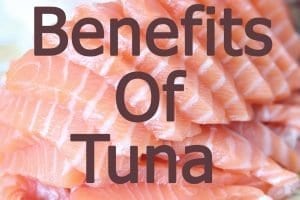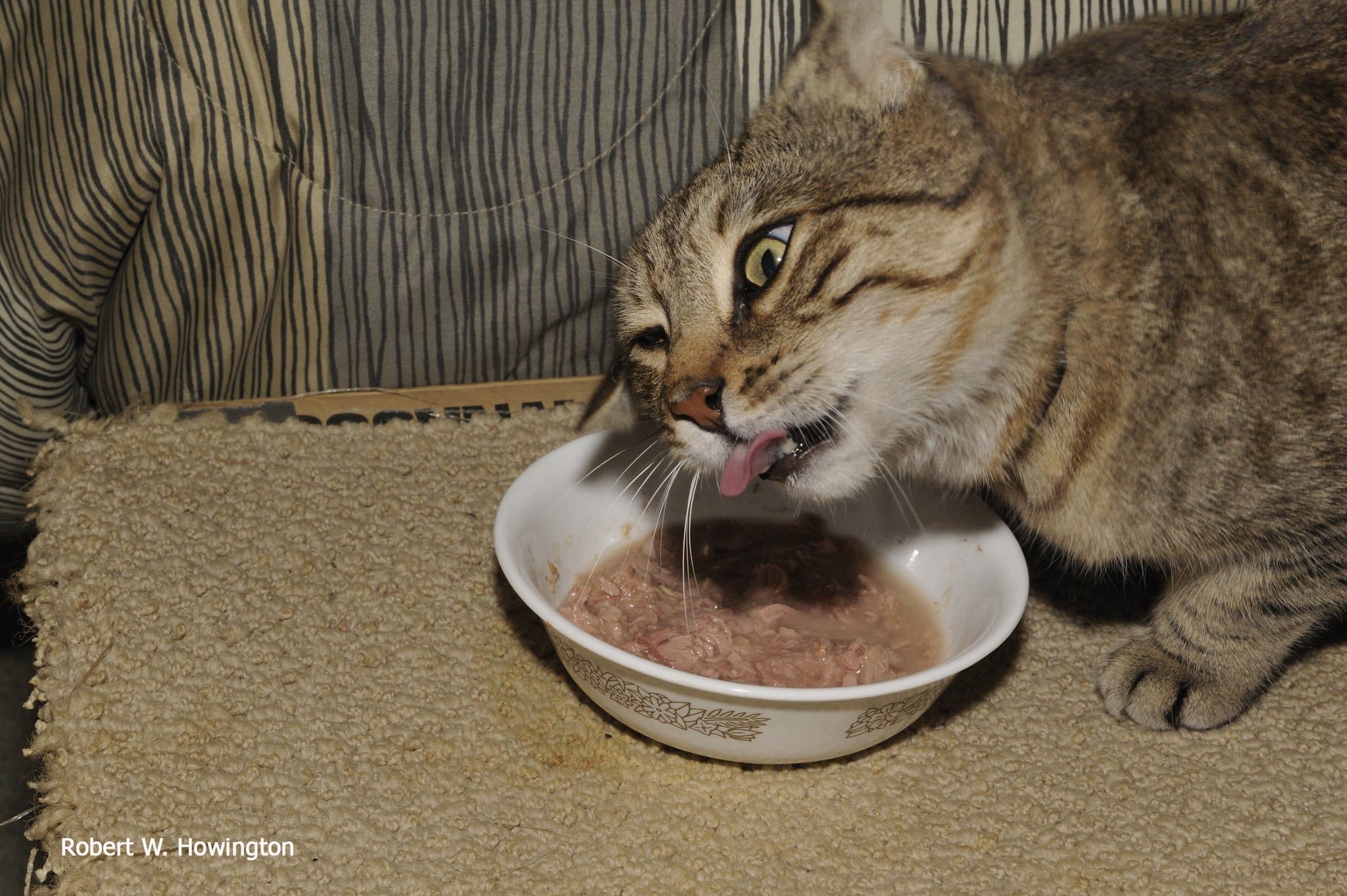Cats are carnivores, their main meal is usually the meat of different kinds because it is an excellent source of protein. We can notice whether in movies, cartoons, or real life, that cats are big fans of fresh fish and tuna. Tuna is very beneficial, and it is an excellent meal for your cat because it provides it with many nutrients.
Your cat would enjoy eating tuna and would be eager for meal time each time, it provides it with high-quality protein and the right amount of moisture required in cat food. However, too much of anything is never a good thing. Many veterinarians advise against feeding your cat tuna every day or providing a tuna only based diet for your cat. After knowing these facts, how much tuna should I feed my cat? And how much tuna can a cat eat?
NOTE: We want to inform our blog readers that before we publish any article the team “Proudcatowners” Do deep research based on experience and knowledge about cat’s and everything related to them, to guarantees reliable and precise information, satisfy the readers is our first priority
How much tuna can a cat eat:
You can feed your cat tuna occasionally. Make sure you include a small portion of tuna in your cat’s diet, it should not exceed 10% of the total food intake, it should not be a regular part of the cat’s diet, and this diet should never be based solely on tuna. Make sure to give your cat a balanced meal, tuna contains excessive amounts of phosphorus, you must take into consideration the other components of your cat’s meal.
Canned tuna:
Yes, it is okay to feed your cat canned tuna. As long as the tuna is not too salty, and you do not feed it to your cat too often. If it is canned tuna that humans eat, you shouldn’t feed it to your cat as it is, with all the oil and salt, when giving your cat canned tuna, you must make sure that the tuna is preserved in water only in the can, and not any other added ingredients. Check the label before feeding your cat. Many vets also advise rinsing the canned tuna with some fresh water before feeding to your cat.
Should I drain the tuna before feeding it to my cat?
If the tuna is in water, it is okay not to drain it, because the more moisture the better and healthier it is for your cat. However, if your cat’s tuna is canned in oil or brine, you should drain it. Brine is too salty for cats, and it is not good for their health.
Natural tuna:
Tuna is usually not part of a cat’s natural diet since they do not have access to it in the wild, however, there is still something about the smell of it that makes cats perk up.
Feeding your cat raw tuna:
Before switching to a raw diet for your cat, you must consult with your veterinarian. Raw tuna can cause gastrointestinal upset in cats. According to Dr. Perea, raw fish contains thiaminase, this later could break down thiamine in cats, which is an essential vitamin B.
What causes thiamine deficiency in cats?
- Low levels of thiamine in the cat’s food
- A gastrointestinal disease that leads to the cat’s inability to absorb thiamine
- The inability to process thiamine because of an underlying illness, or a liver disease
- An all raw fish diet
- Signs of thiamine deficiency in cats:
- Anorexia.
- Vomiting.
- Aggression.
- Vestibular disorder.
- Lack of coordination.
- Neurological symptoms (these may include dilated pupils, vestibular signs, ataxia).
- Tremors and seizures.
Should I feed my cat cooked tuna?
Yes, many cats owners, as well as vets, advise playing on the safe side when feeding your cat tuna. Cooking it before serving it to your cat is a healthy and delicious treat, and can even be addictive to cats, which is why you should be careful with the quantity of tuna you give to your cat.
Make sure you debone it before serving, cooked fish bones can splinter and cause significant damage to your cat’s health, such as obstructing your cat’s throat or gastrointestinal tract.
How should I cook the tuna before feeding it to my cat?
Put one teaspoon of oil or butter in a heated pan, or skillet over medium heat, then add the tuna. Make sure you remove fish bones from it either before or after you cook it.
Once it is well cooked, let it cool down before you serve it to your cat. You can add other foods and mix them together to serve a complete meal for your cat. Avoid adding any seasoning such as garlic, or any other harmful additives for cats.
Best foods to mix with tuna:
There are certain foods you can mix with tuna before serving it your cat, to make up a whole and more balanced meal, some of them are:
- Cooked carrots.
- Cooked eggs.
- Wet canned food.
- Added fats.
NOTE: Make sure you consult your veterinarian before mixing other types of food with your cat’s tuna.
Benefits of feeding your cat tuna:

Tuna is delicious and nutritious food for your cat, as long as it is only served as a treat, moderately. The best kind to serve is 100 % fresh tuna. However, it can be too expensive.
Following a moderate way of feeding your cat tuna is crucial in maintaining a healthy and balanced diet. The amount of tuna should not be more than 10 % of the total diet ingredients. Having said that, tuna provides many health benefits for your cat, including:
- An excellent source of omega 3 fatty acids, thiamine, and vitamin B.
- Boosts your cat’s energy.
- It helps in enhancing blood circulation.
- Nutrients in tuna such as iron, help with red cell function and proliferation.
- it strengthens the immune system of your cat thanks to the high levels of potassium, vitamin B12, vitamin C, and vitamin B6.
- It contains antioxidants and anti-inflammatory agents that help with getting rid of free radicals.
- The nutritious components of tuna help reduce blood pressure.
- It plays a vital role in assisting the removal of toxins from your cat’s body.
- Help prevent heart disease.
- It provides a source of high-quality protein, which contributes to the cat’s proper growth and development.
- It provides the needed moisture for cats in their meals.
- It is an excellent treat.
- It gives the cat diversity in their diet to keep it exciting and nutritious.
- Fish oils are great for your cat’s eyesight.
Risks of feeding your cat tuna:
Despite the many benefits of tuna for your cat, many veterinarians advise that it should only be served for them occasionally in a small amount because it can have many withdraw on your cat’s health as well. In addition to that, tuna is not a balanced meal by itself, nor an utterly nutritious if served alone. Providing your cat with a large quantity of tuna can result in the following consequences:
- Excess supply of thiaminase.
- An over intake of unsaturated fats is unhealthy.
- Excessive and unbalanced amounts of protein.
- Lack of coordination.
- Seizures.
- Deficiency of vitamin B and vitamin C.
- The inability of the cat’s body to defend itself against pathogen attacks and other diseases.
- Weakening the cat’s immune system.
- Yellow fat disease, also known as Steatitis. This disease is due to the inflammation of fatty cells tissues in the cat’s body because of decreased volumes of vitamin E.
Symptoms of Steatitis:
- Fever.
- Hypersensitivity.
- Loss of appetite.
If your cat relies only on tuna, it can develop a deficiency in calcium, copper, sodium, iron, vitamin E, and many other crucial nutrients. Excessive amounts of tuna can also lead to the cat’s addiction to it.
What should I do?
If your cat is relying on tuna for its diet, and it is showing any of the symptoms shown above, you should take it to the veterinarian immediately. Also, make sure you consult your vet every time before switching to any kind of diet for your cat.
When is feeding tuna for cats too much?

If you choose to change your cat’s diet a little bit and include more variety in it through tuna, there are specific amounts you must abide by.
Switching to a tuna only based diet is dangerous, and it is too much tuna for cats. Exceeding 10% of tuna in the cat’s total meal consumption is also too much and can result in serious health problems.
If you choose to include tuna in your cat’s diet, it is best if you do not exceed three times per week, relying on tuna only for your cat’s diet would result in an unbalanced diet, deficiency in nutrients, and excessive agents in the cat’s body that are bad for its health.
Can cats get mercury poisoning from tuna?
Like many other types of fish, tuna has large amounts of mercury as well. These levels transformed into the cat’s system easily once they feed off tuna.
For larger animals, it might take more significant amounts to cause mercury poisoning; however, for cats, feeding them tuna without moderation will lead to mercury poisoning.
How to tell if my cat has mercury poisoning?
This disease can sometimes be hard to diagnose since it is not as common as other illnesses in cats, it can also display symptoms similar to other cat diseases such as thiamine deficiency.
Symptoms of mercury poisoning:
- Affecting the cognitive and mental abilities of the cat negatively.
- Mental disturbance.
- Memory loss.
- Lack of coordination.
- Vision impairment or vision loss.
- Loss of balance.
- Difficulty in walking.
- Your cat might develop a skin rash.
- The weakness of muscles.
- Trembling.
- Seizures.
Should I be worried?
In case you have been feeding your cat tuna in large amounts, or simply including tuna in your cat’s diet, and you notice the symptoms mentioned above, you must take it to the vet immediately.
How to treat mercury poisoning in cats?
Your veterinarian might prescribe some antibiotics and run some tests. It is best to take your cat to the vet as early as possible; ignoring these symptoms would lead to worsening the cat’s health and increasing the degree of poisoning.
You must also provide your cat with large amounts of freshwater. Some damage done by mercury poisoning would be hard to reverse, but your vet would prescribe medications and a moderate balanced diet to follow from now on.
You should also limit your cat’s tuna consumption to help in the healing process, and replace tuna treats with other ones which have lower mercury concentration levels, such as salmon.
When should cats not eat tuna?
According to the American Society for preventing Cruelty to Animals, feeding your cat tuna now and then as treats, in small amounts is fine, however, there are cases in which you should not feed your cat tuna.
Before taking any decision, make sure you consult your veterinarian. Here is a list of cases in which you should avoid feeding your cat tuna:
1) Your cat has tuna allergy:
Even though tuna can be one of your car’s favourite foods or treats, it can still develop an allergy towards it. That can be towards any kind of tuna, whether fresh or canned tuna. Some cat owners would believe that human-grade tuna is better for their cats, but they can still develop an allergy towards it as well.
Causes of tuna allergy for cats:
Food allergy can be caused by a hypersensitivity reaction to a particular ingredient or food, in this case, tuna.
The immune system of your cat reacts to tuna as something dangerous, even though it completely harmless, it sees it as a threat and urges the body to act in response to that, to shield and protect itself.
Symptoms of food allergy because of tuna:
- Erythema.
- Alopecia.
- Indolent ulcers.
- Diarrhea.
- Weight loss.
- Vomiting.
- Pain in the abdominal area.
- Pruritus, which is the desire and sensation that urges the cat to scratch, rub, lick, or chew its skin. This can be the head, neck, or ears areas.
- Conjunctivitis.
- Papules.
- Dermatitis, which is also a skin condition.
- Inflammatory skin problems, also know as Granulomas or eosinophilic granuloma complex.
- Flatulence.
- Inflammatory bowel disease.
- Inflammation of the cat’s nose, also known as rhinitis.
- Pancreas problems.
- Liver conditions.
- Kidney problems or kidney disease.
What I have to do?
In case your cat displays these symptoms if and when tuna is part of its diet, you should take it to the vet immediately. Your veterinarian will run a full physical exam on your cat to eliminate the other possible condition such as gastrointestinal parasites or hypersensitivity from flea bites.
The vet will also ask you about the symptoms, and when they started, so make sure you give the exact details.
Since there is no clear blood test to diagnose a food allergy, the method that is used the most is the elimination diet trial. Your vet will ask you to eliminates tuna from your cat’s diet for at least 12 weeks to see.
It can be treated?
Studies have shown that food allergies (in this case tuna allergy), cannot be treated 100 %, but your vet would prescribe medications as a secondary treatment to relieve your cat’s symptoms. Your cat, however, can recover from it entirely, the speed of recovery depends on the severity of the symptoms it has experienced.
2) Kidney disease:
If your cat suffers from kidney disease or kidney failure, there is a treatment and a specific diet that your vet will prescribe for you. Diets for cats with chronic kidney disease are usually low in sodium and phosphorus.
You must make sure that you sustain adequate nutrition for your cat, in order to slow down the progression of its chronic kidney disease. Consult with your veterinarian before choosing to eliminate tuna or add it to your cat’s diet, especially if it has a chronic disease.
3) Diabetes:
If your cat has diabetes, you must be very careful with the amount of tuna you give it. Tuna is very rich in protein and low in fat, and since cats are carnivores, they can quickly turn excess protein levels in their system into glucose.
This would lead the blood sugar levels to spike. If you only treat your cat with one level teaspoon of tuna once or twice a day, it should be fine.
For cats with diabetes, it is best to keep tuna treats to a minimum, to avoid any rise in their blood sugar levels.
Before you make any decision concerning the food you provide for your cat, make sure you consult with your veterinarian to help you choose a balanced and healthy diet for it.
4) Sensitive stomach:
Sometimes cats develop a sensitive stomach due to eating habits, or other underlying conditions. Being careful with their diets and what kinds of food to provide for them is very important.
Cats can suffer from indigestions, and it can vary from one cat to another concerning the severity and the duration. In some cats, it can be more long-lasting than in others.
Your cat can have a sensitive stomach when it comes to tuna if they overeat it, especially if you are not following a moderate way of feeding them.
So, make sure you do not give large amounts of tuna to your cat, a sensitive stomach can also be due to running or other physical activities right after eating.
A cat with a sensitive stomach would show symptoms as can casual vomiting and diarrhea. Some vets advise taking away your cat’s water and food for 12 hours after they vomit, don’t worry cats survive without eating and drinking for longer than that, however, if your cat displays any of those symptoms repetitively, make sure you schedule an appointment with your veterinarian. Do not take any actions without consulting first.
Good alternative protein sources for cats:
In addition to tuna and other kinds of fish, there other good protein sources which provide healthy and full nutrition for your cat:
- Chicken.
- Lamb.
- Turkey.
- High quality canned food.
Conclusion:
Tuna is an excellent source of protein for your cat, whether it is natural or canned tuna. It can be served to your cat either raw, cooked, or even cooked an mixed with other foods. It has many health benefits, and it is a healthy and delicious treat. However, you must be careful when dealing with the amounts of tuna you provide for your cat. Exceeding 10 % of tuna of the total food intake can result in serious health issues for your cat.
There are certain benefits of feeding your cat tuna such as boosting your cat’s energy, enhancing blood circulation, helping with red cell function and proliferation, and strengthening the immune system. But tuna is not free from risks, too much of it can lead to many negative consequences, such as mercury poisoning for your cat.
There are some health conditions that prevent cats from eating tuna in a regular manner, such as fish allergies, tuna allergy, chronic illnesses such as kidney disease, and diabetes. Luckily for cats, there are many good alternative protein sources such as chicken, turkey, and lamb. Tuna is great for cats, but we must feed it reasonably, and know how much tuna can a cat eat, to avoid any other complications.




